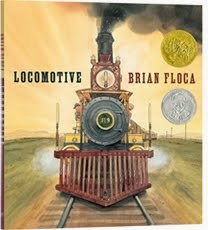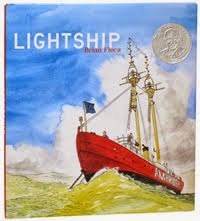BookExpo America arrives today. My studio mates Sophie Blackall, Eddie Hemingway, John Bemelmans Marciano, and Sergio Ruzzier are preparing to welcome booksellers to our studio this afternoon. (We have tried to get it clean, but not too clean. We have certainly succeeded with the latter, possibly even the former.)
The other bit of BEA I’ll be taking part in is tonight’s auction of donated children’s book art. (Details here.) Above is the piece I pitched in, a drawing originally done for Locomotive — but then the page ended up needing a different engine, or a different angle, or a different engine from a different angle. I forget the details. Anyway, if you’re attending the auction tonight and your credit is good, this drawing of Union Pacific engine number 119 can be yours. (Click the image above for a closer look.)
And because I’m not above regional pandering in my effort to drum up bidding: visiting Omaha booksellers, here is Omaha’s own Union Pacific! Visiting Californians, here is one of the engines that linked far-away you to the rest of the country (and now you’re stuck with us)! Visiting Utah booksellers, this is one of the two engines that met at the completion of the first transcontinental railroad at Promontory Summit, Utah, on May 10, 1869. And New Jersey! New Jersey booksellers take note! This mighty engine of the West was built in your backyard by the Rogers Locomotive & Machine Works of Paterson! Happy viewing and bidding and BEA to all.











